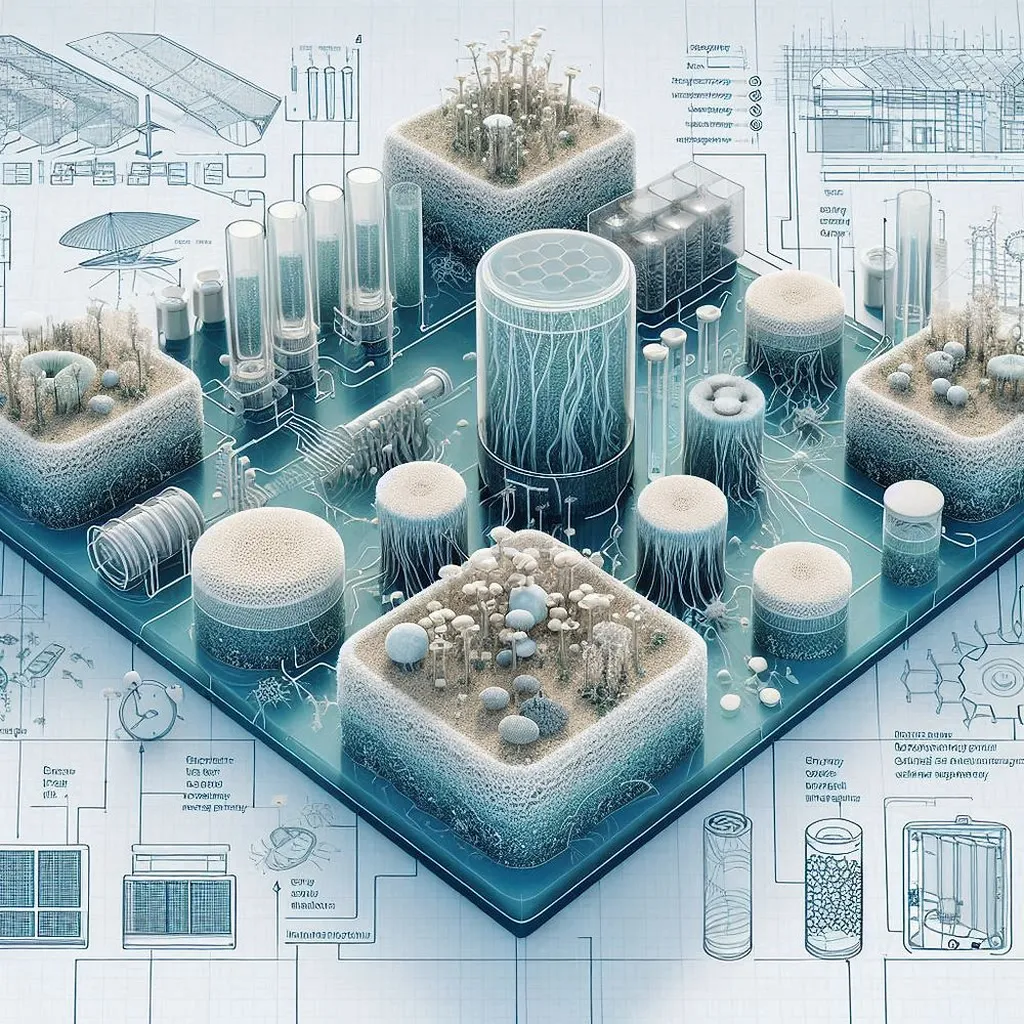In a groundbreaking development for the energy sector, researchers have harnessed the power of nature to create a novel composite material that could revolutionize energy storage. By utilizing mushroom stalks as a biological template, a team led by Wu Ruiqi from the Jiangsu Key Laboratory for Environment Functional Materials at Suzhou University of Science and Technology has developed a multiphase composite that shows promising electrochemical properties for supercapacitors.
The study, published in *Cailiao gongcheng* (translated to *Materials Engineering*), details the synthesis of a CuS/MoS2-g-C3N4/C composite material. The process involves a two-step hydrothermal method to create CuS/MoS2 composites with varying mass ratios, which are then anchored onto the surface of g-C3N4/C. This composite material is characterized by its high purity, good crystallinity, and abundant porous structure, making it an ideal candidate for energy storage applications.
Wu Ruiqi explained, “The key to our success lies in the unique combination of materials and the innovative use of mushroom stalks as a template. This not only enhances the material’s properties but also aligns with sustainable practices, which is crucial for the energy sector.”
The electrochemical performance of the composite material was tested extensively. The CuS/MoS2 composite with a mass ratio of MoS2 to CuS at 1:2 demonstrated optimal performance, achieving a specific capacitance of 230 F·g-1 at a current density of 1 A·g-1. When the mass ratio of CuS/MoS2 to g-C3N4/C was 1:1, the composite material exhibited even better performance, with a specific capacitance of 434.7 F·g-1. Moreover, after 1000 cycles, the capacitance retention rate was an impressive 89.2%, indicating excellent stability.
The implications of this research are significant for the energy sector. Supercapacitors are crucial for energy storage and conversion, and the development of high-performance, stable, and sustainable materials like the CuS/MoS2-g-C3N4/C composite could pave the way for more efficient and environmentally friendly energy solutions.
Wu Ruiqi added, “Our findings open up new possibilities for the design and development of advanced energy storage materials. The use of biomass-derived carbon and transition metal sulfides in combination with graphitic carbon nitride offers a sustainable and effective approach to enhancing the performance of supercapacitors.”
As the world continues to seek sustainable and efficient energy solutions, this research represents a significant step forward. The commercial impact of such materials could be profound, potentially leading to more reliable and cost-effective energy storage systems. The study published in *Cailiao gongcheng* not only highlights the innovative use of natural resources but also underscores the importance of interdisciplinary research in driving technological advancements.
In the quest for cleaner and more efficient energy, this research offers a glimpse into a future where nature and technology converge to create sustainable solutions. The work of Wu Ruiqi and their team is a testament to the power of innovation and the potential of composite materials to shape the energy landscape of tomorrow.

